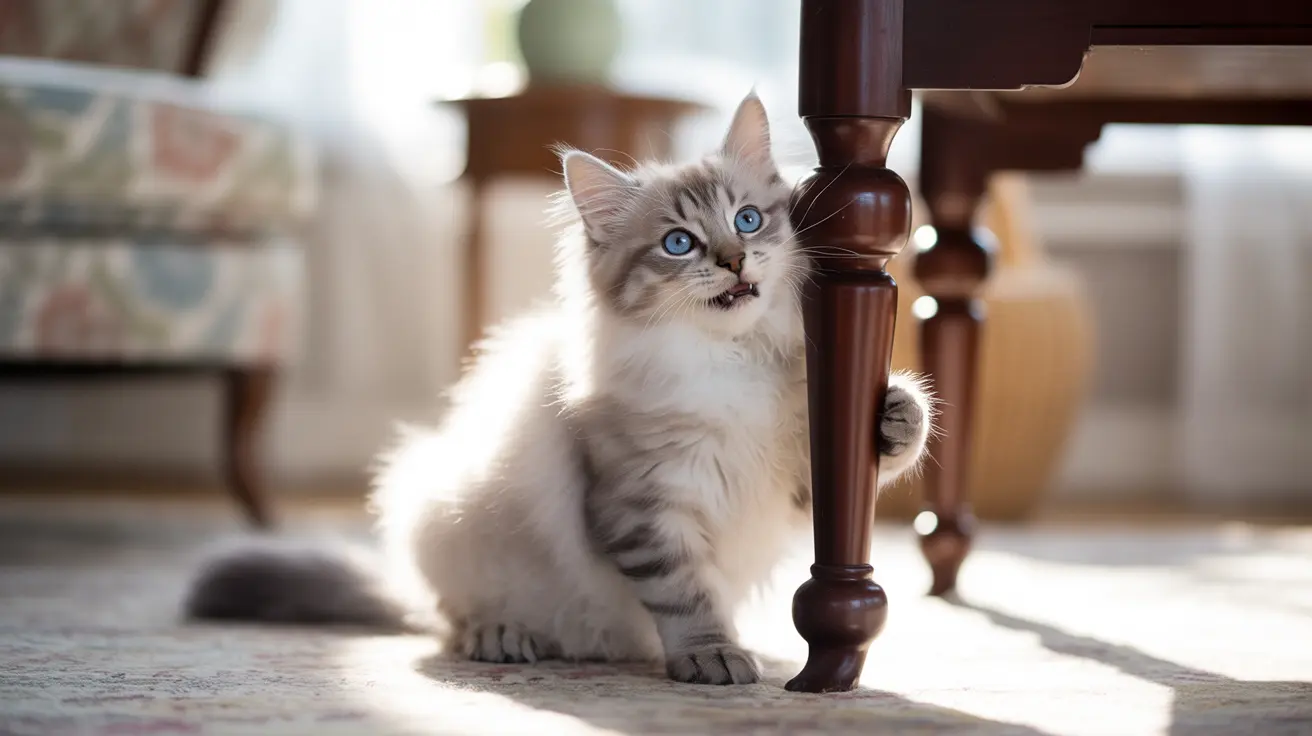If you've noticed your cat constantly rubbing against furniture, walls, or even you while meowing, you're witnessing a fascinating combination of natural feline behaviors. This common occurrence often leaves cat owners wondering about its meaning and whether they should be concerned. Let's explore the various reasons behind this behavior and what it means for your furry friend's well-being.
The Science Behind Cat Rubbing Behavior
Cats have specialized scent glands located on their faces, flanks, and tails that release pheromones when they rub against objects or people. This scent-marking behavior serves multiple purposes in their social and territorial communication system.
When your cat rubs against surfaces, they're actually creating what scientists call "scent profiles" - invisible but important markers that help them navigate their environment and communicate with other cats.
Territory Marking and Ownership Claims
One of the primary reasons cats rub on everything is to mark their territory. This behavior, known as "bunting," helps them:
- Create familiar scent markers in their environment
- Claim objects and spaces as their own
- Establish boundaries with other cats
- Build a comforting scent map of their territory
Understanding the Meowing Connection
When rubbing is accompanied by meowing, your cat is often trying to communicate specific needs or emotions. This vocal-physical combination typically indicates:
- A desire for attention or interaction
- Hunger or thirst
- Excitement or contentment
- Potential stress or anxiety
- Mating behavior (in unspayed cats)
Social Bonding and Communication
Cats use rubbing combined with meowing as a social bonding mechanism. When your cat rubs against you while vocalizing, they're essentially saying "hello" and reinforcing their social connection with you. This behavior is particularly common during greetings or when seeking attention.
Medical and Behavioral Concerns
While rubbing and meowing are typically normal behaviors, excessive or sudden changes might indicate underlying issues:
- Skin problems or allergies
- Stress or anxiety
- Hormonal changes
- Medical conditions requiring veterinary attention
- Cognitive dysfunction in older cats
When to Seek Veterinary Help
Consider consulting a veterinarian if you notice:
- Excessive or obsessive rubbing
- Unusual changes in vocalization
- Signs of skin irritation
- Behavioral changes
- Loss of appetite or other concerning symptoms
Frequently Asked Questions
Why is my cat rubbing on everything and meowing all the time?
This behavior typically combines territory marking, social bonding, and communication. Your cat is creating familiar scent markers while potentially seeking attention or expressing needs through vocalization.
Could my cat's constant rubbing and vocalizing mean a medical problem?
While usually normal, excessive rubbing and meowing might indicate skin issues, stress, or other medical conditions. Consult a veterinarian if the behavior seems unusual or is accompanied by other symptoms.
How can I tell if my cat is rubbing and meowing for attention, affection, or territory marking?
Context is key. Attention-seeking usually involves direct interaction with you, while territory marking focuses on objects and surfaces. Affectionate behavior typically includes purring and relaxed body language.
Will spaying or neutering stop my unspayed cat from rubbing and meowing so much?
Yes, spaying or neutering often reduces excessive rubbing and meowing related to mating behavior, particularly in female cats in heat.
What practical steps can I take to reduce obsessive rubbing and excessive meowing?
Ensure regular feeding schedules, provide environmental enrichment, maintain consistent attention and playtime, and address any underlying medical issues with your veterinarian.
Conclusion
Understanding why your cat rubs on everything and meows helps you better respond to their needs and ensure their well-being. While these behaviors are typically normal and healthy, being attentive to changes can help you maintain your cat's physical and emotional health. Remember to provide plenty of attention, environmental enrichment, and regular veterinary care to keep your feline friend happy and healthy.






